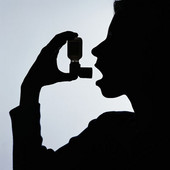
WEDNESDAY, April 20 (HealthDay News) — New research finds that adults who suffered from eczema as children — especially if they also had hay fever — are nine times more likely to have allergic asthma when they’re in their 40s.
The findings are based on about 1,400 adults who have been followed for five decades as part of Australia’s Tasmanian Longitudinal Health Study. The study participants were assessed in 1968, when they were 7 years old, and then again in 2004 when they were about 44 years of age.
“In this study we see that childhood eczema, particularly when hay fever also occurs, is a very strong predictor of who will suffer from allergic asthma in adult life,” lead study author Pamela Martin, a University of Melbourne graduate student at the Murdoch Childrens Research Institute, said in a university news release. “The implications of this study are that prevention and rigorous treatment of childhood eczema and hay fever may prevent the persistence and development of asthma.”
Allergic asthma is airway obstruction and inflammation that’s triggered by inhaled allergens such as dust mites, pet dander, pollen and mold.
According to Martin, the study is the first to examine childhood eczema and hay fever and their connection to allergic versus nonallergic asthma. The linkage between childhood illnesses and adult asthma is called the “atopic march.”
“If successful strategies to stop the ‘atopic march’ are identified, this could ultimately save lives and health care costs related to asthma management and treatment,” Shyamali Dharmage, principal investigator of the Tasmanian Longitudinal Health Study and associate professor at the University of Melbourne’s School of Population Health, said in the news release.
The researchers suspect that about 30 percent of cases of allergic asthma could be the result of childhood eczema and hay fever.
The study findings were released online in advance of publication in an upcoming print issue of the Journal of Allergy and Clinical Immunology.
More information
For more about asthma, try the U.S. National Library of Medicine.

